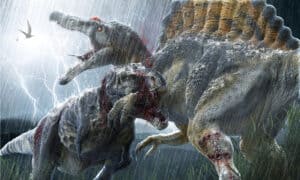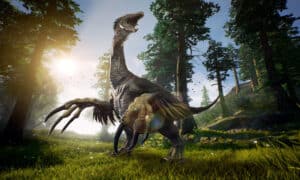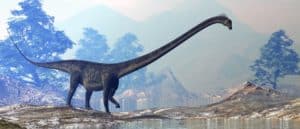West Virginia is the 35th state in the United States. It’s nicknamed the Mountain State and is a great destination for those who love hiking and taking beautiful nature walks. West Virginia has old, stunning mountains, luscious rivers, beautiful caves, and dense forests. But were there any dinosaurs that lived in West Virginia?
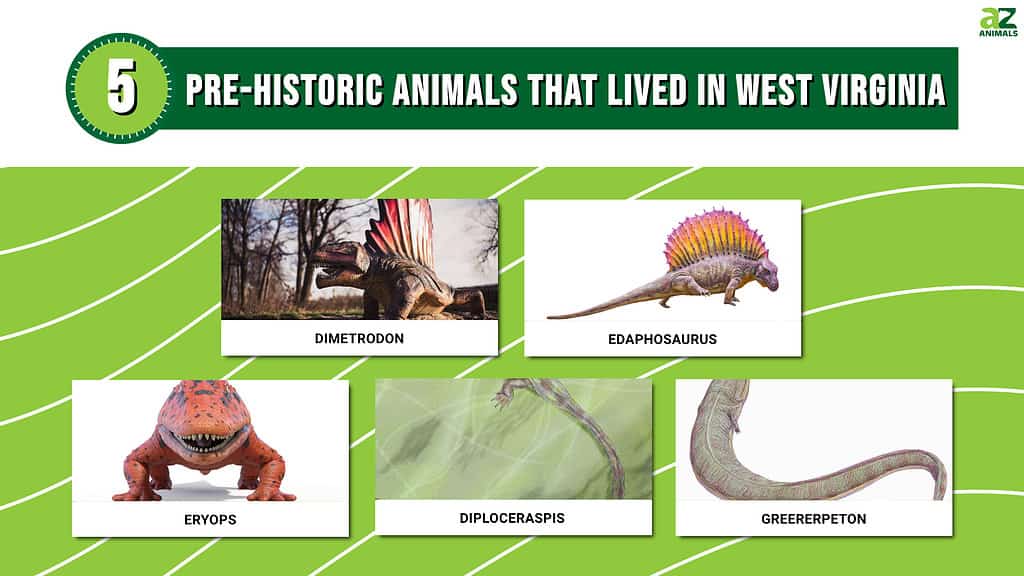
Long before West Virginia became a state, pre-historic animals called the land home. However, scientists have never found dinosaur fossils in West Virginia. While dinosaurs likely never roamed this state, other ancient, now-extinct animals did. Keep reading to learn more!
Dimetrodon
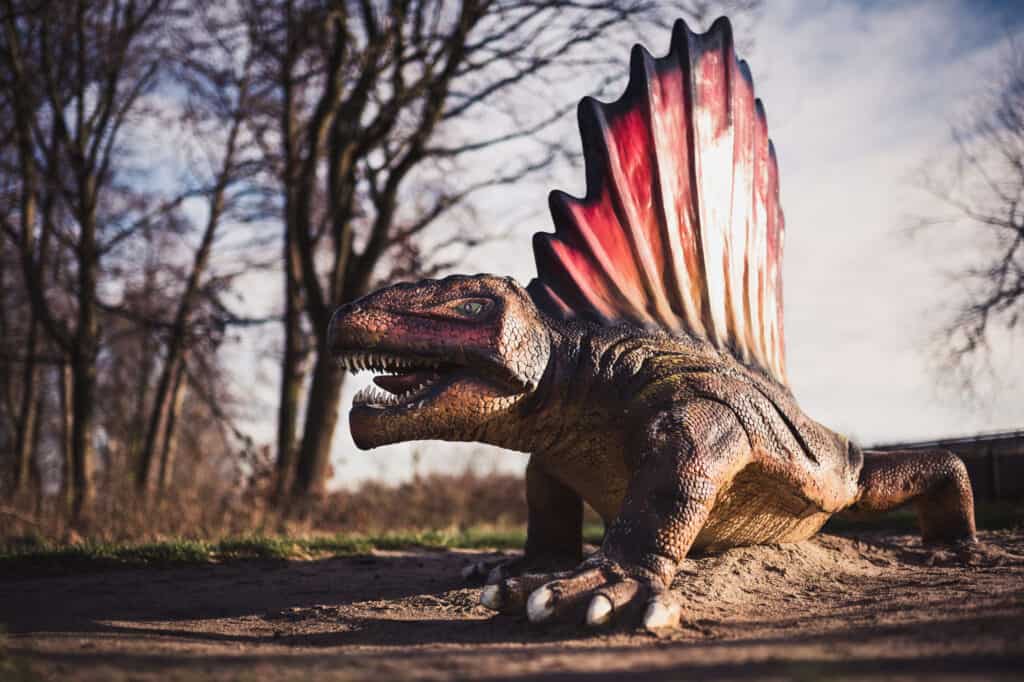
The Dimetrodon had elongated spines extending from its vertebrate.
©Dziurek/Shutterstock.com
Proof of Dimetrodon have been found in West Virginia. Contrary to popular belief, Dimetrodon are not dinosaurs. Instead, they are classified as non-mammalian synapsids and are a genus with over a dozen species. They lived around 295–272 million years ago during the Cisuralian. This unique extinct animal had neural spine sails with elongated spines protruding from the vertebrae. Dimetrodon had large teeth of different sizes and a curved skull. Although scientists have found tracks in West Virginia, most Dimetrodon skeletons are from the Red Beds of Texas and Oklahoma. Interestingly, their fossils have been recorded as far as Germany. The specific species found in West Virginia is the Dimetrodon berea.
Edaphosaurus
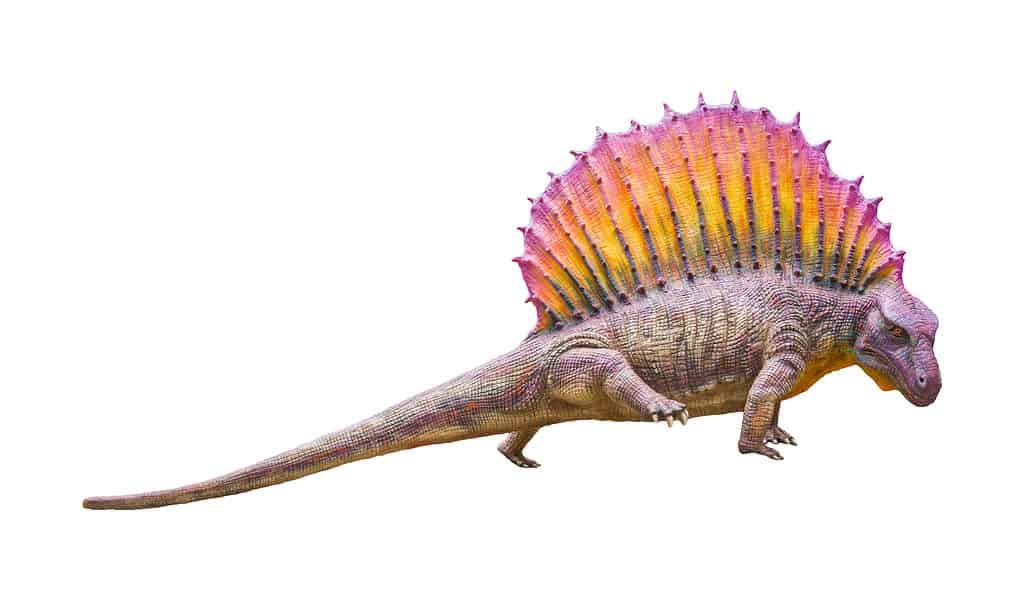
This large animal is one of the earliest known four-legged land-living vertebrate herbivores.
©YuRi Photolife/Shutterstock.com
The Edaphosaurus is a genus of extinct edaphosaurid synapsids. Their name means “pavement lizard” and this pre-historic animal had dense clusters of teeth. They likely lived in North America and Europe between 303.4 to 272.5 million years ago. This large animal is one of the earliest known four-legged land-living vertebrate herbivores. According to fossils, this animal likely weighed over 600 pounds and measured 1.6 to 11.5 feet long. Archeologists first found them in Texas Red Beds but later uncovered them in West Virginia, New Mexico, Oklahoma, and Ohio.
Eryops
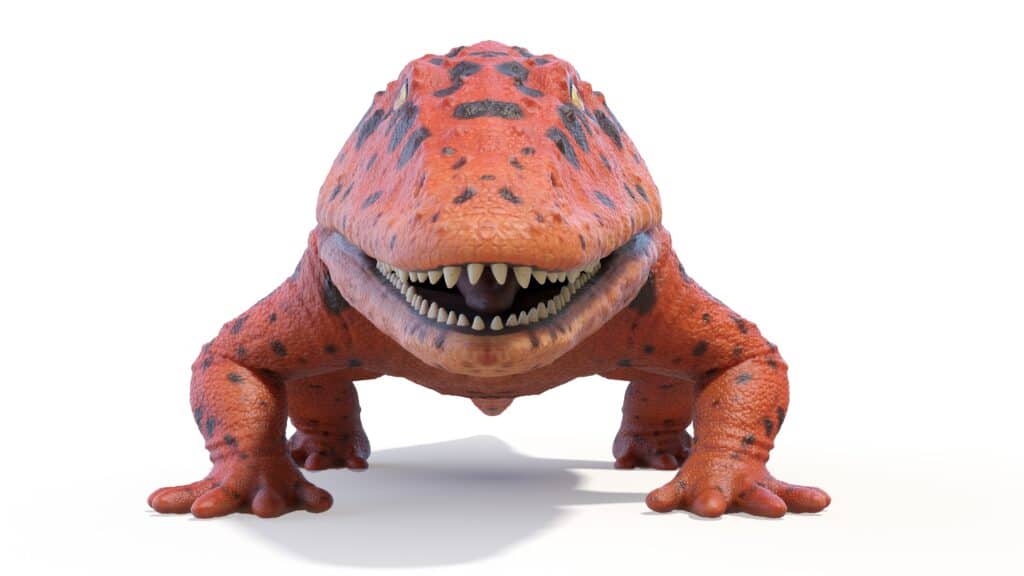
These huge amphibians were likely the largest land animal in their time, weighing between 225 and 489 pounds.
©Sciepro/Shutterstock.com
Eryops tracks were discovered in West Virginia. This pre-historic animal was an amphibious temnospondyl. Only one species exists in the genus, the Eryops megacephalus. Scientists estimate that these animals were about 4.9–6.6 feet long. They were likely the largest land animals in their time, weighing between 225 and 489 pounds. They lived in the early Permian and the late Carboniferous. Most fossils are skull bones and teeth, although archeologists have discovered full skeletons in Archer County, Texas, and New Mexico.
Diploceraspis
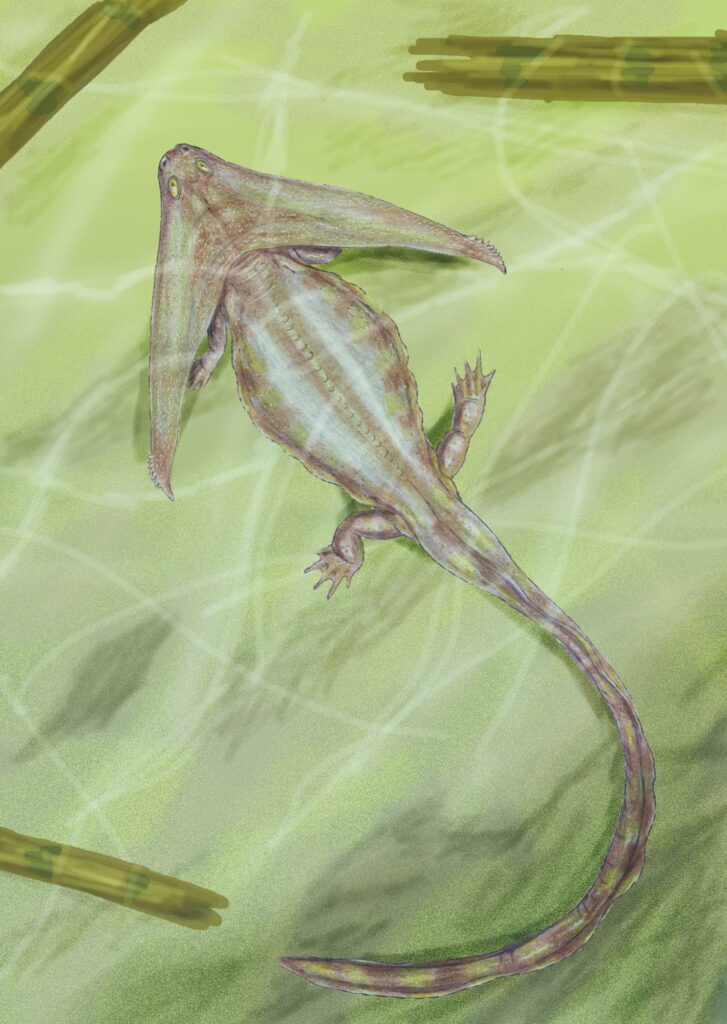
This amphibian grew just over 46 cm (18 inches)
©Creator: Dmitry Bogdanov, CC BY 3.0 <https://creativecommons.org/licenses/by/3.0>, via Wikimedia Commons – License
There is not a lot known about the Dipliceraspis. It’s a genus of lepospondyl amphibian. It is very similar to its relative, the Diplocaulus, but is a lot smaller. This amphibian grew just over 46 cm. Fossils have been found in North America, including West Virginia, Nebraska, and Oklahoma. It lived during the Permian period.
Greererpeton
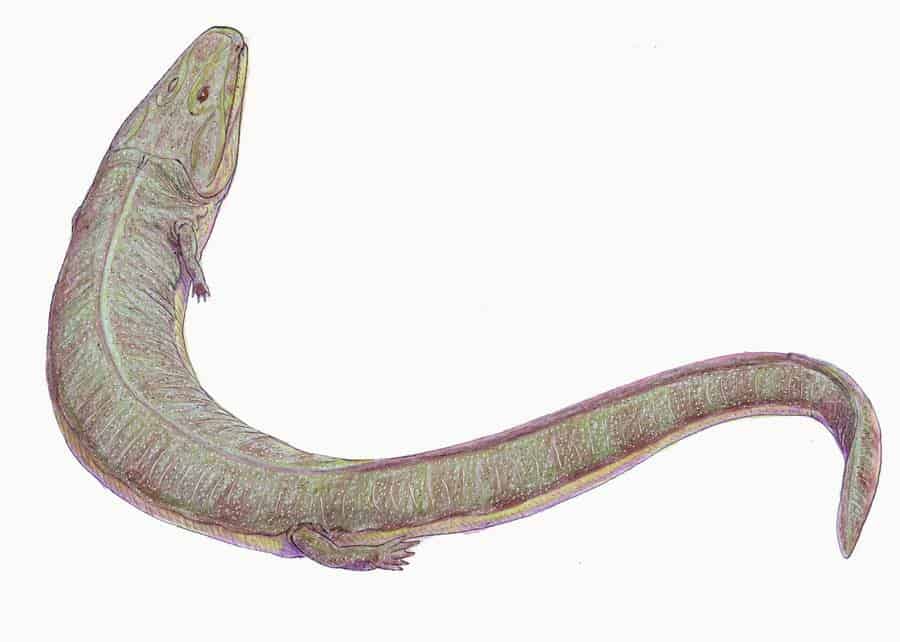
Greererpeton is from the Early Carboniferous period.
©ДиБгд at Russian Wikipedia, Public domain, via Wikimedia Commons – License
Last but not least, the Greererpeton is one of the most common pre-historic specimens in West Virginia. It’s an extinct genus of colosteid stem tetrapods. Greererpeton is from the Early Carboniferous period. These pre-historic animals lived about 335 to 331 million years ago. Experts believe this animal was aquatic and had an elongated body for swimming. Adults could reach up to 4.9 feet long. Greererpeton has 40 vertebrae and a flat skull sometimes measuring up to 7.1 inches long.
Where To See Fossils In West Virginia
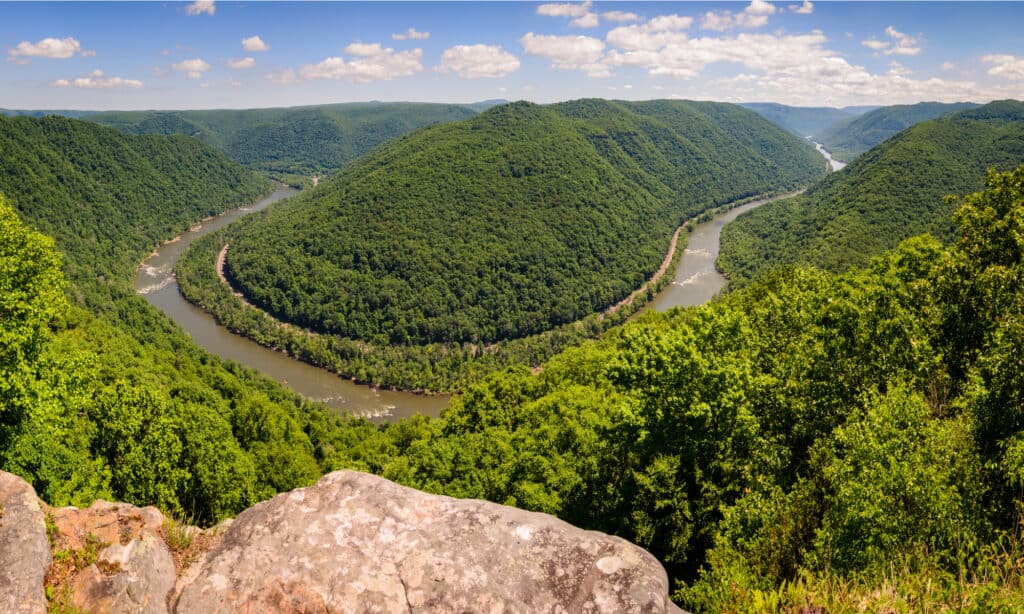
Another great place to see fossils in West Virginia is the New River Gorge National Park.
©Zack Frank/Shutterstock.com
While you can take a trip to the WVGES Museum, there are also natural areas in West Virginia where you can see, appreciate, and hunt for fossils. A common and popular fossil hunting spot in the state is the Lost River. This is a roadside quarry near Wardensville. It is a 390-million-year-old Devonian reef that was perched at the Kaskaskia Sea. Some of the most common fossils you can find in this spot include trilobite phacops Rana and brachiopod. Treat these fragile fossils carefully. If you find a fossil with an orange-colored shale, this means it is poorly preserved and can break easily.
Another great place to see fossils in West Virginia is the New River Gorge National Park. However, since it’s a national park, you might not be able to take the fossils home. Always ask before taking a fossil out of the park. This beautiful location has many fossils from the Devonian Era. You can also visit Yellow Springs in Hampshire County, where it’s possible to uncover Odontocephalus, Phacops, and Brachiopods. Another popular fossil hunting spot is Berkeley Springs, where searchers have found multiple fossils in the Pennsylvania Glass Sand Quarry, including corals and plant fragments.
Summary Of The 5 Pre-historic Animals That Lived In West Virginia (And Where To See Fossils Today)
| Rank | Animal | Where To Possibly See Fossils |
|---|---|---|
| 1 | Dimetrodon | WVGES Museum, Lost River, Yellow Springs, New River Gorge National Park, Berkeley Springs |
| 2 | Edaphosaurus | WVGES Museum, Lost River, Yellow Springs, New River Gorge National Park, Berkeley Springs |
| 3 | Eryops | WVGES Museum, Lost River, Yellow Springs, New River Gorge National Park, Berkeley Springs |
| 4 | Diploceraspis | WVGES Museum, Lost River, Yellow Springs, New River Gorge National Park, Berkeley Springs |
| 5 | Greererpeton | WVGES Museum, Lost River, Yellow Springs, New River Gorge National Park, Berkeley Springs |
The photo featured at the top of this post is © Wirestock Creators/Shutterstock.com
Thank you for reading! Have some feedback for us? Contact the AZ Animals editorial team.



